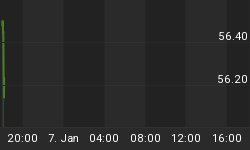The pattern is by now so familiar that it deserves a place beside other technical indicators like moving averages and Fibonacci retracements.
It begins with part or all of the global economy appearing to implode under its five-decade accumulation of debt. The public sector/central bank nexus responds with a liquidity injection, leading the markets to rally explosively and the pundits to declare the problem fixed. Then the markets gradually remember that liquidity and solvency are two different things, and that the mortgage lenders/money center banks/PIIGS countries/hedge funds/State and local governments, etc., are insolvent, not illiquid. And the cycle begins again.
But what to call it? "Sucker rally" seems a little too benign and prosaic for a process that looks more like fraud perpetrated on a learning-disabled, desperately-credulous victim.
"Death throes of a decadent system" is accurate but too pretentious and doesn't convey the cyclical (and cynical) nature of the process.
"Financial terrorism" is better, since the regularity of the cycle -- and the fact that central banks have absolute control over the timing -- imply that there's massive insider trading going on, possibly as part of a scheme by the (name your favorite elite conspiracy group) to suck as much wealth out of the system as possible before finally letting it collapse. Still, the term doesn't convey the comic aspect of rich, supposedly-astute players getting suckered over and over. Incompetent money managers are funny.
In the end, what it's called is less important than the fact that it's a great trading indicator. Starting in 2007, if you'd gone long risk when the markets were falling apart -- on the assumption that panicked governments would quickly intervene -- and then taken profits and gone short a few weeks after the intervention, you'd have made a fortune from all the volatility.
The current market looks like another perfect set-up: A week ago, Europe was collapsing, China was slowing down and the US budgeting process was paralyzed. Stocks around the world had fallen hard, and a Euro-zone breakup was being actively planned for by governments and trading exchanges. Armageddon, in other words. So the central banks inject another hit of liquidity and Germany and the ECB appear to embrace the commingling of the continent's balance sheets. And voila, the bulls are back in charge.
Now, trading strategies work until they don't, and there's always the risk that this latest bailout will actually fix the world's problems and usher in a new era of consumer-led growth with soaring corporate profits, low inflation, and rising share prices. But...nah, why even give this possibility serious consideration? Nothing that was promised this week will make much of a near-term difference. Lower reserve requirements in China and cheaper dollar-denominated loans in Europe are just tweaks to already existing programs. More fiscal integration in Europe is inevitable if the common currency is to function as promised. But think for a moment about what this implies -- Germany and France getting to micromanage Italy's pension and tax system -- and it clearly isn't happening this month. Getting from here to a German-run Europe will take maybe five more near-death experiences, and in any event won't address the fact that even Germany's balance sheet (when you include its unfunded liabilities) really isn't AAA.
So, the pattern should hold: "Risk-on" trades work this week, then things get choppy for a while. Then the markets grow cautious and finally terrified. The most likely catalyst for the panic stage is the massive, front-loaded refinancing schedule that Italy and Spain have unwisely set up for early 2012. But it could be anything. The point is to be short risk when it hits but not to marry the position, because more liquidity is on the way. The con will keep working as long as the world continues to see fiat currencies as valuable.
















